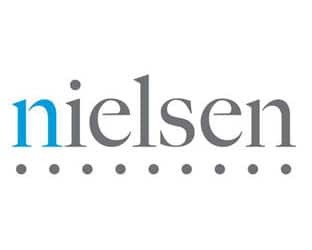In the latest twist involving the internet audio stream of an over-the-air broadcast radio station and its “highly unusual” presence in the Nielsen Audio PPM ratings for Tampa-St. Petersburg, the audience measurement company this morning affirmed its January and February reports despite the removal of the household responsible for the unusual activity.
In a client letter distributed Tuesday morning (3/14), Nielsen provided “additional clarity” to its decision to remove a Tampa-St. Petersburg-Clearwater household from the panel.
While explaining that the removal of the household was “due to a meter wearing compliance issue,” it was done effective with the start of the March survey.
Thus, Nielsen Audio is not restating the January and February data “because the home met our compliance standards during those measurement periods.”
In the January 2017 Tampa Nielsen Audio monthly report, WYUU-IF — the internet stream of Beasley Media Group‘s Tropical WYUU-FM “Maxima 92.5” — was the the top-ranked station among Persons 18-34 and Women 18-34.
As noted by Kabrich in a blog post appearing March 2, a Hispanic Female aged 18-2 4 and a Hispanic Male 25-34 are directly responsible for this achievement.
4 and a Hispanic Male 25-34 are directly responsible for this achievement.
“WYUU-IF did not previously appear in the ratings and it is highly unusual for an internet stream to have a top ranked position,” Nielsen admits.
Providing greater clarity on the household in question, and total Maxima 92.5 internet stream exposure in the Tampa market, Nielsen says, “While multiple households contributed listening to WYUU-IF, one household contributed substantial listening to the station in January – a four-person household in which all members were Hispanic persons aged 18-54. These factors created a ratings outlier that does not represent the market’s overall listening behavior.”
What happened, and why did Maxima’s audio stream appear in the Nielsen Audio ratings for Tampa at all? The company addressed these two questions, along with its plans for addressing these types of situations going forward.
First, it explained that Nielsen Audio regularly monitors its panel for compliance with its meter wear standards and the “security and integrity of the panel.”
Nielsen said, “In January and February, this household met those standards, including the requirement that all household members wear or carry their individually assigned meters during waking hours. In addition, quality assurance checks indicated that the household was not affiliated with any media entity and we had no basis to conclude that the household’s listening was inauthentic. For these reasons, this home was included in the ratings for January and February, consistent with our established policy.”
Here’s where things went awry.
“While the home met our minimum compliance requirements in January and February, they displayed signs of deviation from our norms for meter wear,” Nielsen adds. “Per our quality assurance procedures, members of our internal audit staff (including one bilingual auditor) visited the home and verified that the household members understood their responsibilities as PPM panelists. In addition, a bilingual Panel Relations Specialist called the home to provide additional coaching to ensure proper usage of the PPM device. Following the household visit and coaching call, the household’s meter wear behavior showed no signs of improvement. Per our policy, we removed the household from the panel effective with the start of the March monthly reporting period.”
The phrase “signs of improvement” may strike up a new debate among Nielsen subscribers, as the ratings company is sticking with the data from two surveys despite the need for additional training and coaching of panelists who contributed exposure to a radio station in those surveys.
Addressing this situation, Nielsen commented, “We recognize that outliers like this are disruptive to users of the data. Therefore, we are expediting work on methods to augment existing procedures to address cases where a single household has a disproportionate effect on a station’s audience estimates. These steps involve both the disclosure of outliers when they occur and methods to mitigate their effect on the published ratings. We will have additional details on these steps for all subscribers in the near future when our evaluation is complete.”
Just when the prickly pear couldn’t get any thornier, we’ve landed into a cactus grove full of questions that could set off a vociferous response from station groups in Tampa — and subscribers across all PPM markets. So, two individuals who were single-handedly responsible for making a Spanish-language radio station’s audio stream No. 1 in a key demo are now gone, because they couldn’t follow directions. But … their compliance for the January and February surveys was acceptable because they were still learning the directions? That’s what it sounds like, and that may make the PPM a Maxima topic across many a C-Suite.





